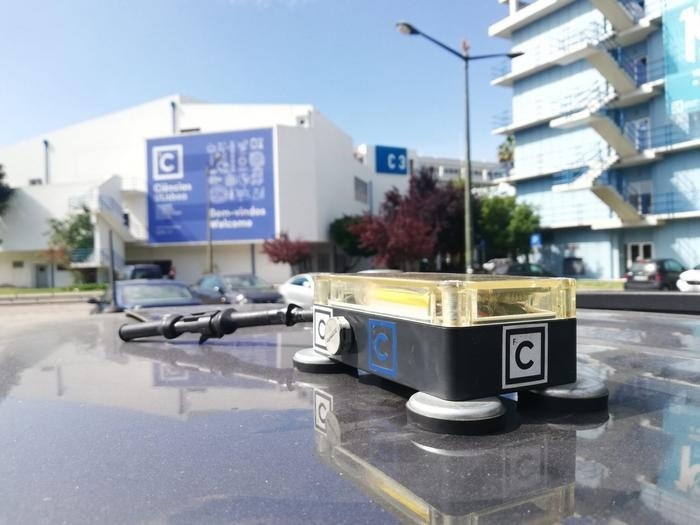A recent study looked at how solar-powered cars could work in 100 cities around the world. It found that these cars can go between 11 and 29 km each day using solar energy, which means they only need to be charged half as often.
 Radiation sensor on top of a vehicle. Image Credit: Miguel Centeno Brito.
Radiation sensor on top of a vehicle. Image Credit: Miguel Centeno Brito.
Even though more people are using electric vehicles, they still produce a lot of carbon dioxide, which can have negative consequences on the environment. To meet the goals of reducing carbon emissions, there is a need to identify more ways to make transportation cleaner.
One way to do this is by adding solar panels to electric vehicles, which are called “solar cars.” This can help by reducing the pollution from making electricity and making it cheaper to charge the cars. It is good for both car owners and the power grid.
Cities are today the main market for electric vehicles and, due to the relatively small traveled distances, are particularly interesting for solar-powered vehicles. However, in urban areas, we have buildings, trees, and other obstacles casting shadows onto the roads thus limiting the solar potential of driving or parked vehicles. The purpose of the work was to assess if the impact of these shadows is a significant limitation to the potential of solar cars.
Miguel Centeno Brito, Study First Author and Researcher, Instituto Dom Luiz – IDL, Faculty of Sciences of the University of Lisbon
The study also discovered that the best places for solar-powered cars are cities in Africa, the Middle East, southern Europe, and Southeast Asia. However, solar cars could also work well in other places like China, North America, and Australia. While shading in cities can cause a 25% loss in efficiency, it is not a big problem for making this solution widespread.
At the same time, the research team started an experiment with regular people to check if the model’s predictions were accurate.
The increasing urban populations and worries about environmental sustainability are becoming important and solar-powered vehicles are here at the right time.
Our results can help establish a roadmap for policymakers and the automotive industry to accelerate the transition to a more sustainable and environmentally friendly urban future.
Miguel Centeno Brito, Study First Author and Researcher, Instituto Dom Luiz – IDL, Faculty of Sciences of the University of Lisbon
A group of researchers from Portugal's Ciências ULisboa, along with collaborators from France (Mines Paris - PSL) and Luxembourg (LIST), carried out this study all over the world.
Journal Reference:
Brito, M. C., et al. (2023). Effect of urban shadowing on the potential of solar‐powered vehicles. Progress in Photovoltaics. doi.org/10.1002/pip.3737.